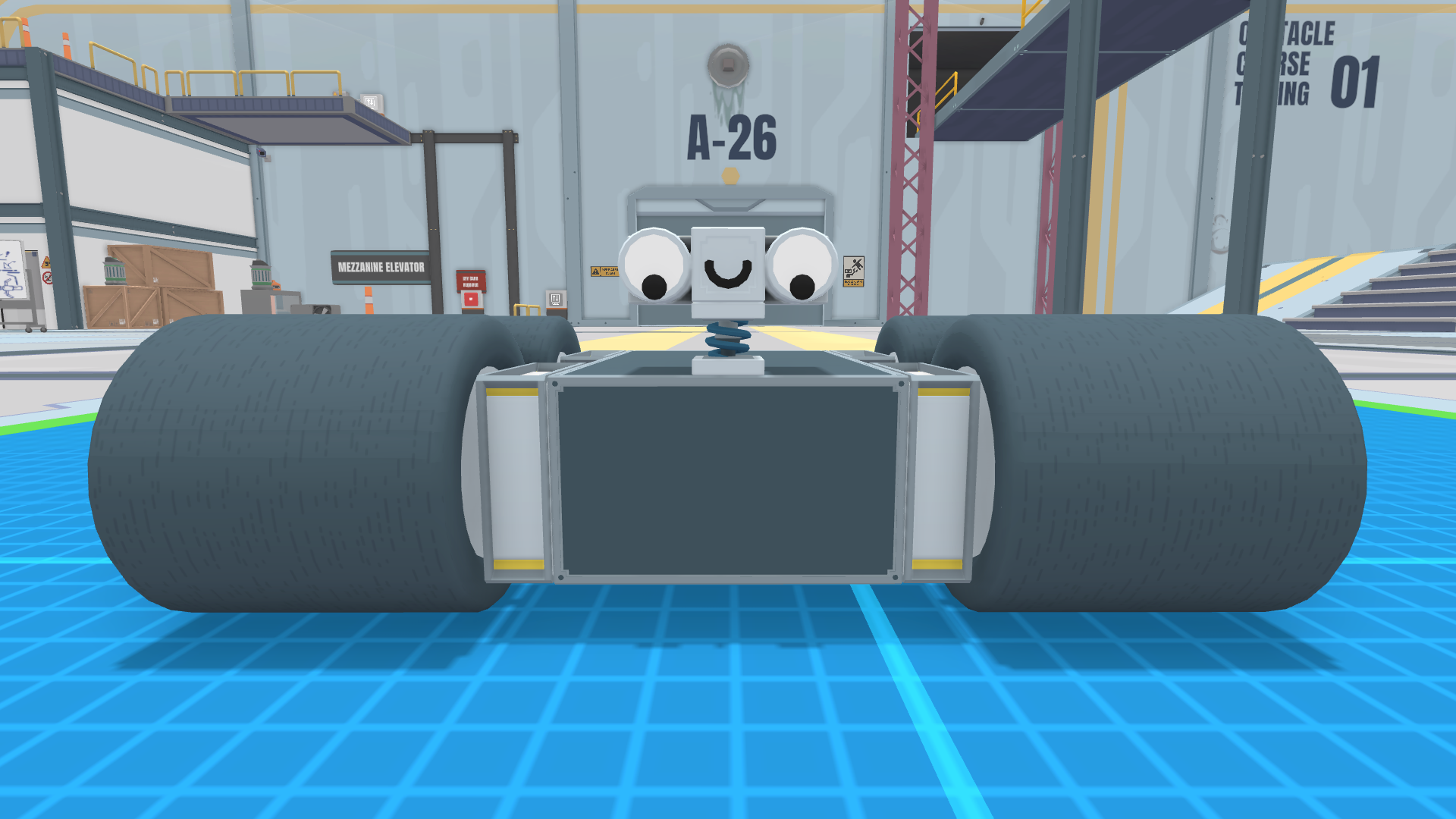Happy Friday, everyone!
Last week, we talked about adding collision sounds to RoboCo. This week, we’re talking about some visual changes we made to our wheels!
From Secret Experiment to Intended Feature
Pop quiz for those of you who have played a RoboCo demo: How many types of wheels were there in the demo you played, if you ignore the different sizes?
If you answered “just one type of wheel,” that is true enough, based on how those past demos have presented the wheels. But the secret, more correct answer is “two types.” Let me explain.
Our original wheel dates back to 2017 when the project began. This wheel uses a mesh collider that roughly matches the shape of the wheel. As a result, this wheel could exist at a variety of dimensions like 3x3x1 or 5x5x3.
In 2019, we experimented with a second type of wheel. This used a sphere collider in addition to a slightly inset mesh collider, yielding a different physics experience. As a result of the sphere collider, this wheel could only exist at cube dimensions like 3x3x3 or 5x5x5.
In the RoboCo demos, both of these wheels have been present but they looked the same and were just called “Wheel.” The only way to know which type you were getting was to pay attention to the wheel’s dimensions and notice the different physics. This is because we didn’t originally expect to launch with both types. We thought we would select one of the wheel collider types, or come up with a third approach that we preferred to either of them.
In the end, we saw some value in keeping both wheel types and making them more distinct and official. We ultimately concluded that this is a creative sandbox game and having options is part of the fun!
Setting the Right Expectations
Another factor in our visual redesign is that up until recently, our wheels had a rubber tire tread texture on them. It looked slick but the car tire implications didn’t match how either of our current wheels feel. And in fact, many real-world robotics wheels aren’t car tires. So we decided to come up with two new wheel visuals, to differentiate our two current types of wheels and better match their feel.
So here we are, (re)introducing RoboCo’s two wheels!
Solid Wheel
A solid wheel with a rubber grip. High friction, but bumpy at high RPM. You may prefer these wheels in instances where you want snappy turning or stopping. If you are looking to optimize your robot’s cost, these wheels are also less expensive than an RC Wheel of equivalent size.
Inspired by robotics wheels like AndyMark’s SmoothGrip Wheel.
RC Wheel
A dense foam wheel. Low friction, and smoother at high RPM. You may prefer these wheels when you want to trade rapid responsiveness for a less bumpy ride.
Inspired by the foam wheels sometimes used on RC cars.
Note that we are using different default colors to help set the two types of wheels apart, but both wheels are paintable if you prefer your own look.
Sounds Like a Great Match! Will a Third Wheel Tag Along?
These two wheel types are what we’ll have available for Early Access launch (very soon!), but they are unlikely to be the last. Post-launch, we anticipate adding some manner of omnidirectional wheel like mecanum wheels. We also hear all of you in the community who have asked for suspension and/or a pneumatic wheel that looks and feels more like a car tire.
And that’s it for this week’s dev blog! We’re working tirelessly to fix bugs and prep for November 3rd. But don’t worry, wheel be back next week with more exciting RoboCo updates!
For the latest news on RoboCo, follow us on Twitter, YouTube, Facebook, Instagram, and TikTok! You can also connect with other community members and us by joining our official Discord and Reddit! Don’t forget to add RoboCo to your Steam Wishlist!
